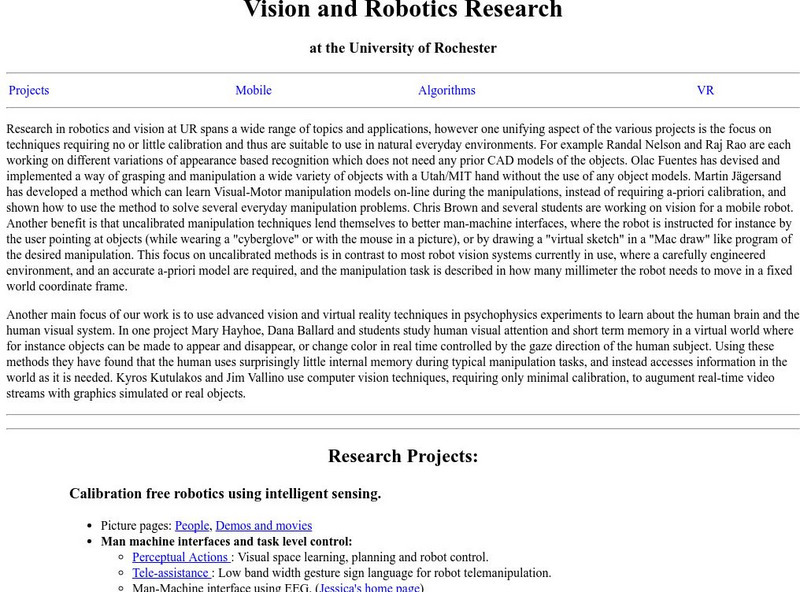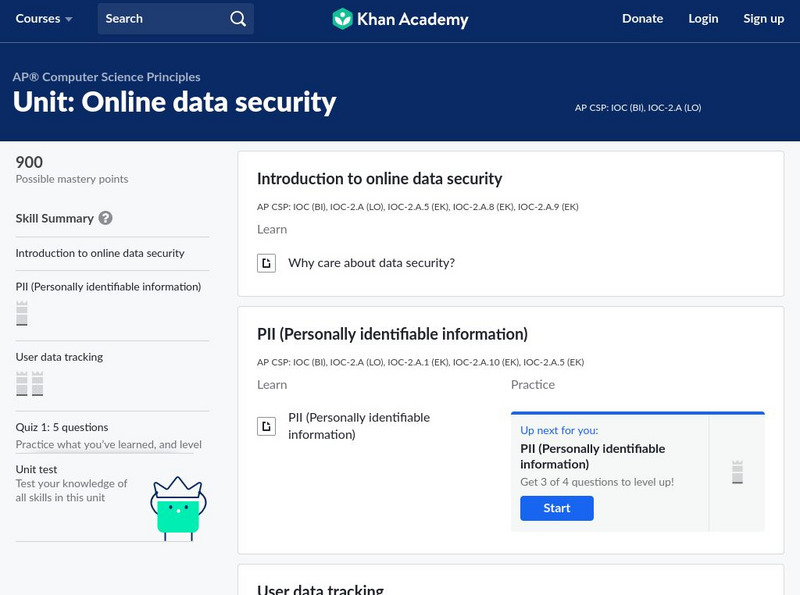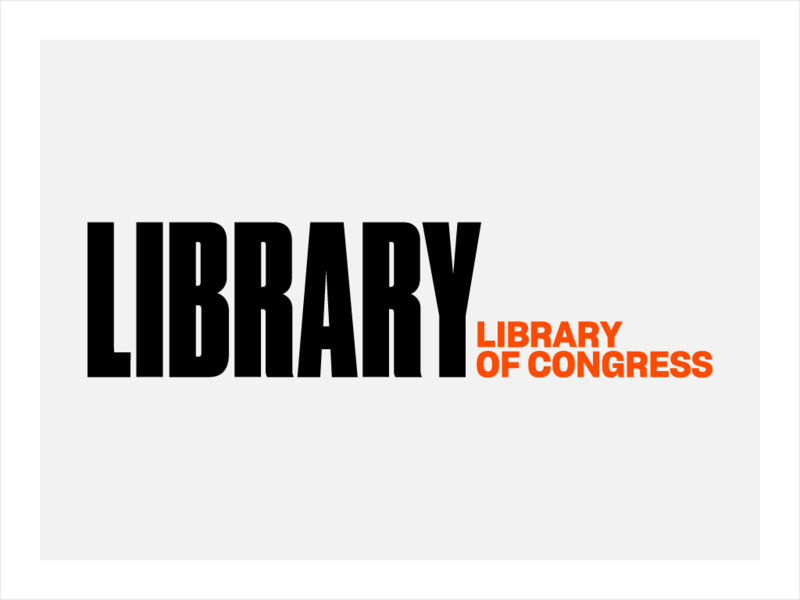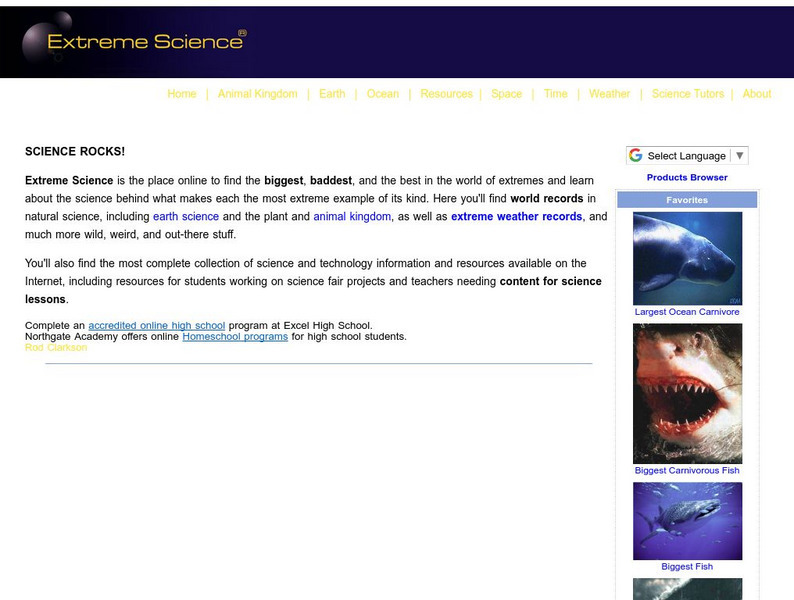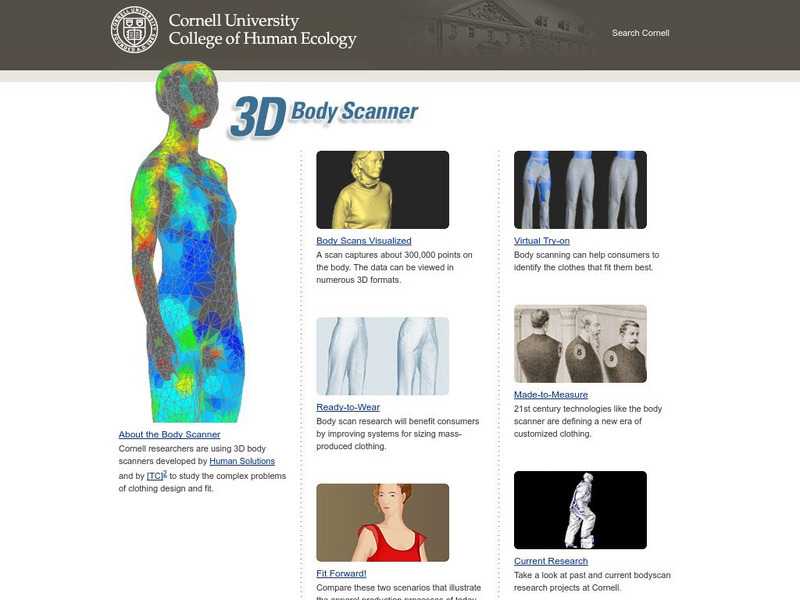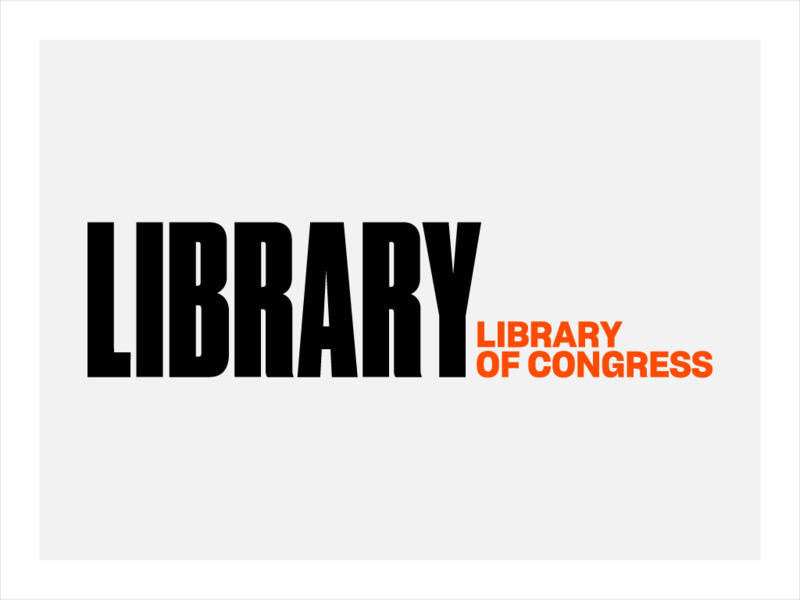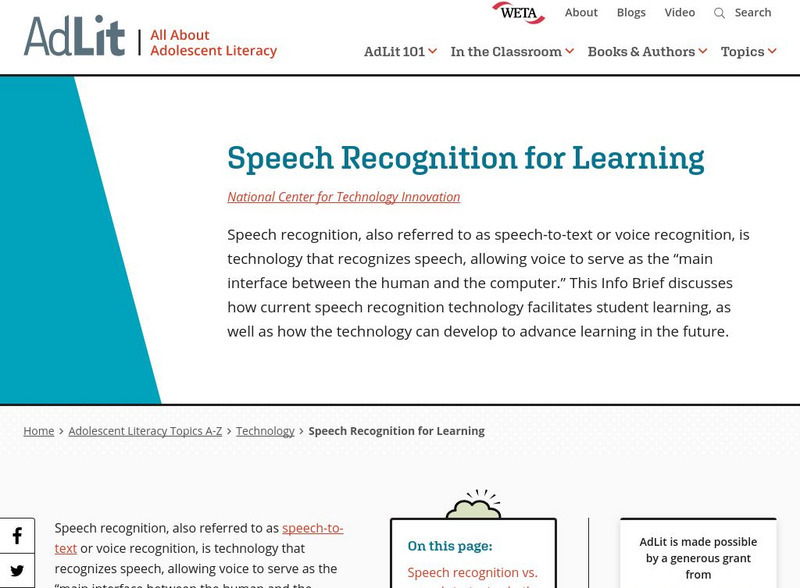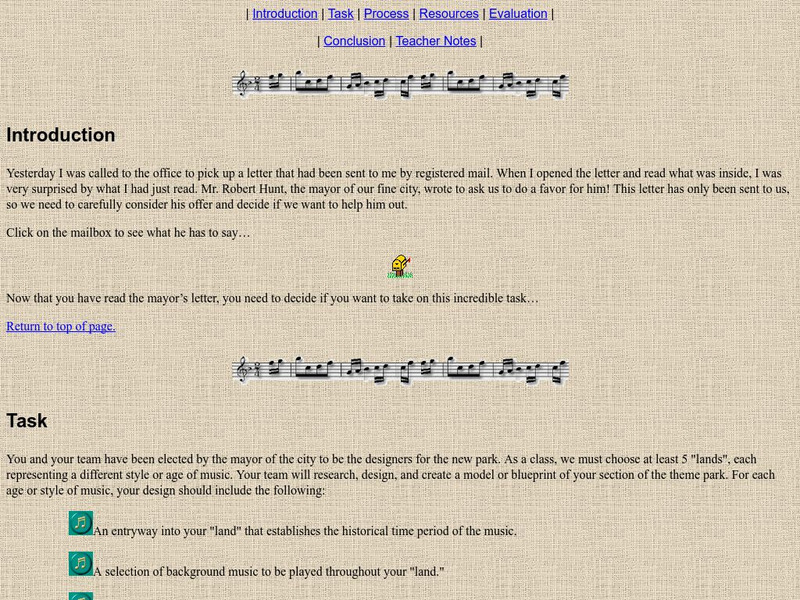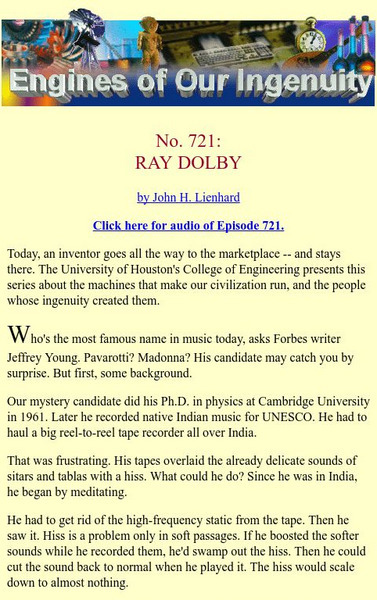Teachers TryScience
Teachers Try Science: Stem Lessons and Resources for Educators
Free and engaging lessons, along with teaching strategies and resources, which are designed to spark students' interest in science, technology, engineering, and math.
Other
University of Rochester: Robot Demonstrations
Excellent information of robotics projects at the University of Rochester, including video demonstrations of robots in action.
TryEngineering
Try Engineering: Making Sense of Sensors
Lesson explore sensors focusing on ones that measure humidity. Students work in teams to design, build, test, and evaluate a hygrometer which was made out of everyday materials to measure humidity levels.
Khan Academy
Khan Academy: Unit: Online Data Security
Readings and practice problems about online data security.
National Institutes of Health
Paediatrics & Child Health: Impact of Media Use on Children and Youth
This article from Paediatrics & Child Health provides research about how television, radio, music, video games and the Internet impact media on children and youth.
National Women’s History Museum
National Women's History Museum: Getting With the Program
American women's contributions to the invention and formation of computer programing.
ArtsNow
Arts Now Learning: Magic Rocks [Pdf]
In this lesson, students work in groups with each acting as a predator, prey, or family member in a particular habitat. They present their habitat performance to the class and students identify the habitat and animal relationships. Then,...
OpenStax
Open Stax: Entrepreneurship: Creativity, Innovation, and Invention: How They Differ
This resources teaches students how to distinguish between creativity, innovation, and invention, and to explain the difference between pioneering and incremental innovation, and which processes are best suited to each.
PBS
Pbs: A Science Odyssey
Website for the PBS series "A Science Odyssey." Numerous opportunities to explore the people and discoveries of science.
Library of Congress
Loc: Teachers: America at the Centennial
A lesson plan requiring student to analyze primary documents from the Philadelphia Centennial Exposition of 1876. Students interpret what these historical artifacts say "about the lives and values of Americans in 1876" among other things.
Extreme Science
Extreme Science
Find the biggest, baddest, most extreme of everything science all in one place. Includes wild topics in earth science, life science, space science, weather, oceanography, and technology.
National Academy of Engineering
Greatest Achievements: Computers
Computers are one of the top 20 engineering innovations of the 20th century. Read the history behind this great invention.
Extreme Science
Extreme Science
Explore the science behind the "extremes" in our world. Organized into sections on earth science, the animal kingdom, technology, and space science, this site opens your eyes to giant creatures, amazing technological advances, vast...
Cornell University
Cornell University: 3 D Body Scanner
Body scanning is a new technology that is shifting the focus of apparel production from "Cookie-cutter," to "One-of-a-kind." This site gives information about the technology, visualizations of a body scan, scenarios of the production...
Library of Congress
Loc: Around the World in 1896
Working in groups, students plan, take, and document a trip around the world in 1896 using World's Transportation Commission. This collection presents documentary evidence concerning the role of technology at the turn of the twentieth...
PBS
Pbs Learning Media: Hurricane
Students are asked why viewing weather phenomenon through space cameras is important.
AdLit
Ad lit.org: Speech Recognition for Learning
Speech recognition, also referred to as speech-to-text or voice recognition, is technology that recognizes speech, allowing voice to serve as the "main interface between the human and the computer." This Info Brief discusses how current...
Rice University
Galileo Project: Galileo Galilei
This site from The Galileo Project of Rice University contains information about Galileo's lifespan, father, nationality, education, religion, scientific disciplines, means of patronage, patronage, technological involvement, and...
National Council of Teachers of Mathematics
The Math Forum: A Collection of Secondary Math Units
Teachers of grades 9-12 can explore these seven math units for their classes. Data collection and analysis, problem solving with spreadsheets, and linear transformation are just a few of the topics covered here.
Pennsylvania State University
Penn State University: Design a Theme Park About Music
This is a WebQuest lesson in which students design a theme park consisting of musical "Lands," of various styles and genres.
PBS
Pbs: Technology at Home
Travel back in time to find out when everyday items such as a computer, radio, or telephone first appeared in homes. You can also connect to links about the people who invented these items.
PBS
Pbs Learning Media: The Intelligent Robot
In this segment from Curious, learn how a robot is a machine that can connect with its surroundings and has some level of autonomy.
University of Houston
University of Houston: Engines of Our Ingenuity: Ray Dolby
Read the story behind on of the most famous name in music today, Ray Dolby, as told by Forbes writer Jeffrey Young.
TryEngineering
Try Engineering: Electric Messages: Then and Now
Lesson investigates electronic communication from the Morse Code system to text messaging. To learn about this, students construct simple circuits, send messages to each other, and explore the history and impact of communication.

